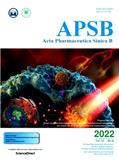
药学学报(英文)(Acta Pharmaceutica Sinica B)(不收版面费审稿费) 知网万方目次维普目次
- CSCD
- 科核
- 主管单位:
中国科学技术协会
- 主办单位:
中国药学会、中国医学科学院药物研究所
- 国际刊号:
2211-3835;EISSN2211-3843
- 国内刊号:
10-1171/R
- 学科分类:
- 字数:
8000-112000
- 有无基金:
/有基金 100.0%
- 周期:
CN外文-月刊
- 特殊属性:
第一批认定学术期刊
- 电话:
010-63026192;63035116(202206期)
- 邮箱:
apsb@yxxb.com.cnyxxb@imm.ac.cn(202206期)
- 复合因子:
3.363
- 综合因子:
2.556
- 收录:
知网,万方目次,维普目次
- 级别:
CSCD,科核
期刊简介
《药学学报》期刊已被查看: 次
更新频次
单位占比
一作占比
/有基金-100.0%投稿指南
1、投稿方式:在线投稿。
2、刊内网址:
http://www.yxxb.com.cn(网站升级,暂无法登陆)
http://www.elsevier.com/locate/apsb
自动跳转至:
https://www.journals.elsevier.com/acta-pharmaceutica-sinica-b
3、投稿系统:
https://www.editorialmanager.com/apsb/
4、出刊日期:月刊,每月25日出版。
5、不收版面费审稿费。
2022年9月6日星期二
《药学学报(英文版)》投稿须知
【2022年06期信息】
Information for Authors
Acta
Pharmaceutica Sinica B is an English language bimonthly peer-reviewed
journal published online in ScienceDirect which invites research
articles, reviews and communications in all areas of the pharmaceutical
sciences. It is one of a series of Acta Pharmaceutica Sinica journals
founded in 1953 and sponsored by the Institute of Materia Medica,
Chinese Academy of Medical Sciences and the Chinese Pharmaceutical
Association. It is produced and hosted by Elsevier B. V.
1. Scope of submitted manuscripts
The
journal invites original articles and review papers dealing with all
aspects of the pharmaceutical sciences including pharmacology,
pharmaceutics, medicinal chemistry, natural products, pharmacognosy,
pharmaceutical analysis and pharmacokinetics.
Review
articles: These should encompass new and important aspects of study and
should describe research results and provide a critical analysis of the
issue.
Original articles: These should deal with new, significant and innovative findings based on recent research.
Communications:
Articles should contain new and important information that is likely to
be of interest to readers and makes urgent publication desirable.
2. Submissions of manuscripts
Manuscripts
should be submitted online via EVISE® at
http://www.evise.com/evise/faces/pages/navigation/NavController.jspx?JRNL_ACR=APSB
by registering and logging into this website. The system is easy to use
and allows authors to submit papers online and track their progress
through the editorial process.
Prior
or duplicate publications are not accepted. All manuscripts, especially
data, must not have been published or submitted for publication
elsewhere. The authors should make a full disclosure of any past
submissions. Submitted manuscripts should be accompanied by a covering
letter giving: (1) the title of the manuscript; (2) a statement that the
manuscript has not been published in part or whole (except in the form
of abstract) nor is under consideration for publication elsewhere in any
language.
The
source of financial assistance and other support must be acknowledged.
The contribution of colleagues or institutions should also be
acknowledged.
3. Peer-review
3.1 Manuscript receipt
Upon
receipt of a manuscript, the Editorial Office will immediately assign a
code number which should be used in all subsequent correspondence. An
acknowledgement of receipt letter will be sent to the corresponding
author. After pre-review by the editors, most submitted manuscripts will
be sent to expert reviewers for peer-review. All manuscripts are
subject to editorial modification.
3.2 Revision
On
receipt of comments from the Editorial Office, the authors should
revise their manuscript, answer the comments one by one and indicate the
page and line of each correction to the manuscript. A revised
manuscript will be considered a new submission if not returned to the
Editorial Office within 1 month. Revised versions labeled with the
manuscript code number should be sent electronically or by e-mail.
3.3 Rejected manuscripts
If a manuscript is not accepted for publication, the authors will receive a decision letter along with the reviewers’ comments.
3.4 Proof reading
Checking
the proofs is solely the authors’ responsibility. Answer any queries on
the proof itself. Corrections are restricted to printer’s errors and
should be made legibly (preferably by typing) in the margins. Use
universally accepted proofreader’s signs and symbols. If the authors
feel the need to include new information, it should be inserted as a
“Note added in proof” and will be included with the permission of the
Editorial Office.
3.5 Copyright Assignment Form
Papers
accepted for publication become the copyright of Acta Pharmaceutica
Sinica B and authors will be asked to sign a transfer of copyright form.
All authors must read and agree to the conditions outlined in the
Copyright Assignment Form and must sign it. Articles will not be
published until a signed Copyright Assignment Form has been received.
Authors
should return the proof and Copyright Assignment Form within 3 days to
the Editorial Office. If the time limit is exceeded, publication of the
article may be delayed.
4. Organization of the manuscript
4.1 Title
The
title of the manuscript must be informative, specific and brief (<30
words). Words should be chosen carefully to facilitate the retrieval
process. Minimal use of nonfunctional words is encouraged.
4.2 Authors and affiliation
Each
author should have participated sufficiently in the work to take public
responsibility for the content. Capitalize the first letter in the
surname(s) and spell out the given name(s) in full-name form, e.g.
Jiandong Jiang. Any change in authorship must be approved in writing by
all authors. The corresponding author should be indicated by an asterisk
(*) to the right of the corresponding author’s name and their telephone
number, fax number and e-mail address given in the footnote. The
affiliation of each author should also be given.
4.3 Abstract
The
abstract should describe the aim, general methods, results and
conclusions of the manuscript. It should be presented as a single
paragraph following the title page.
4.4 Key words
Authors
should provide 5–8 key words or phrases drawn from those recommended by
the US National Library of Medicine’s Medical Subject Headings (MeSH)
browser list at http://www.nlm.nih.gov/mesh/meshhome.html. If a suitable
MeSH term is not available, a more general term suitable for indexing
may be used.
4.5 Text
4.5.1
Introduction: This should provide a concise summary of the topic based
on relevant references and should give a clear description of the
purpose of the study being reported or reviewed.
4.5.2
Materials and methods: This should provide sources of the main drugs,
chemicals and instruments (including manufacturers and specifications)
used in the study and should provide sufficient technical information to
allow the experiments to be repeated. New methods or modifications to
existing methods should be described in detail.
Drug
nomenclature: International Nonproprietary Names (INN) or generic names
should be employed whenever possible. The first letter of the drug name
should be lowercase for INN or generic names, but capitalized for
proprietary names.
Species
nomenclature: The scientific names [genus, species (in italic form) and
authority] of all plants, animals and microorganisms should be given.
Common names may be used in certain circumstances. For crude drug names,
put name of medicinal parts first (in standard form).
Experimental
subjects: The authors should indicate the grade of animals used in
experiments. Rats and mice should be at least specific pathogen free.
The sex, age and body weight of tested animals (or humans in clinical
studies) should be given as mean, standard deviation and total range.
Animal experiments should adhere to instructions for the care and use of
animals provided by the appropriate Ethics Committee. Human experiments
may be performed only in accordance with the ethical standards and
permission of the responsible committee of the institution at which the
work was carried out.
4.5.3
Quantities, units, and numerical values: SI units must be used for
example: length (m, cm, mm, μm, nm), mass (kg, g, mg, μg), volume (L,
mL, μL), time (s, min, h, d), temperature (°C, K), radiation (Bq, dpm),
concentration [mol/L, mmol/L, mg/mL, μg/mL, % (v/v), % (w/v)]. Physical
quantities should be printed in italic type e.g. t (h). When an Arabic
number precedes an SI unit, the unit symbol should be used rather than
the full name of the unit, for example, 1 min (one minute), 2 h (two
hours). No unit is required for relative molecular mass.
4.5.4
Abbreviations: These must only be used after being spelled out in full
at their first appearance followed by the abbreviation in parentheses.
Routes of administration may be abbreviated e.g. intravenous (iv),
intramuscular (im), intraperitoneal (ip), subcutaneous (sc),
intracerebroventricular (icv), intraarterial (ia), per oral (po),
intragastric gavage (ig).
4.5.5
Numbers and effective digits: The effective digits in a datum are
determined by the variation within the sample which is one-third of the
standard deviation. For example: 4820.5 ± 340.8 g should be 4.8 ± 0.3
kg. For other expression of numbers, use 2%–6% (not 2–6%), 5×104–7×104
(not 5–7×104) and 2 mm × 3 mm × 4 mm (not 2×3×4 mm).
4.5.6
Tables and figures: Each table and figure should have a legend that is
self-explanatory (intelligible without reference to the text) and should
avoid repetition of data in the text. Tables are preferable to figures
especially if the figure is a simple histogram. Indicate the number (n)
and character of observations and subjects.
Tables
should be numbered consecutively with Arabic numerals followed
immediately by its legend. Each column in a table should have a short or
abbreviated heading with the unit in parentheses. If an experimental
condition is the same for all of the tabulated experiments (e.g. the n),
give this information in a statement accompanying the table.
Figures
must not include handwritten or typewritten lettering. The intervals
should be integers so that the interpolation will permit accurate
evaluation of the points. Symbols and curves can be identified in the
figure itself or in the legend. Broader lines should be drawn for curves
than for the axes. Avoid wasting space. Combine related curves in a
single figure when possible to save space and convey more information.
Do not extrapolate curves nor extend the axes far beyond the contents.
When feasible, curves should be transformed into straight lines with the
aid of logarithm, reciprocal, probit, logit, etc. Indicate scales by
short index lines and repeat the index lines on the opposite side unless
more than one scale is used. The resolution of each figure should be:
line art 1000 dpi, monochrome 600 dpi and colorful figure 300 dpi (or
higher).
Photographs
must be of the highest quality with good contrast. Color photographs
are welcome. With photomicrographs, only the essential parts should be
shown: a second small photomicrograph at higher magnification is usually
more informative than a single large one. Scale markers (e.g. 1 μm)
should be put inside the photomicrographs. Briefly explain the symbols,
arrows, numbers, or letters in the illustrations.
Identify
the method of staining and magnification of the photomicrographs (e.g.
HE stain, ×900). The resolution of each photograph should be 300 dpi (or
higher).
For
submission, TIFF, PSD, AI, JPEG and EPS are recommended acceptable
formats for the figures, which should be submitted separately. Maximum
width of tables and figures should be 80 mm (single column) and 160 mm
(double column). Please use only one typespace of writing in any one
diagram (Helvetica, Arial or Times New Roman).
4.5.7
Nomenclature: For chemical compounds, this should be in accordance with
the nomenclature rules formulated by IUPAC. Alternatively naming may
conform to that given in the index of Chemical Abstracts or the Ring
Index. Stereochemical information (cis, Z, R, etc.), locants (N-methyl,
α-amino) and symmetry designations (C2v) should also be italicized.
Chemical formula(e) should be numbered with boldface Arabic numerals
(e.g. 1). Abbreviations such as Me, Et, n-Bu, i-Pr, s-Bu, t-Bu, and Ph
may be used. General substituents should be indicated by R1, R2 etc or
R, R′
etc. The spatial arrangement of substituents should be indicated by
hatched lines or a wedge.A minus sign must be as long as the crossbar of
a plus sign.
4.5.8
Confirmation of structure: Adequate evidence to establish structural
identity must accompany all new compounds that appear in the
Experimental Section of Original Articles and Communications. Generally,
the physical and chemical parameters of new compounds should be given
in the following order: m.p. (b.p.); [α]D; UV-vis λmax; IRυ, 1H NMR and
13C NMR; MS m/z; elemental analyses or HRMS data. List only IR
wavelengths that are diagnostic for key functional groups.
4.5.9
Statistical methods: These should be described when they are used to
verify the results. Suitable techniques should be chosen for statistical
treatments e.g. t-test (group or paired comparisons), chi-square test,
Ridit, probit, regression (linear, curvilinear, or stepwise),
correlation, analysis of variance (ANOVA), analysis of covariance, etc.
Only homogeneous data can be averaged. Standard deviations are preferred
to standard errors. Give the number of observations and subjects (n).
Identify
statistical significance by superscripts in front of the probabilities
(P): *P<0.05, **P<0.01, ***P<0.001 vs A; △P<0.05, △△P<0.01, △△△P<0.001 vs B.
Values
such as ED50, LD50, IC50 should have their 95% confidence limits
calculated and compared by weighted probit analysis (Bliss and Finney).
The word “significantly” should be replaced by its synonyms (if it
indicates extent) or the P value (if it indicates statistical
significance).
4.5.10
Results and discussion: These should emphasize or summarize only
important observations. Give absolute values rather than percentages
particularly for control values. Present your results followed by tables
or figures and reserve extensive interpretation of the results for the
discussion section. In the discussion, emphasize new and important
findings and relate your results to other studies. Discuss the
shortcomings or limitations of your experiments. New hypotheses and
recommendations may be proposed when warranted.
4.5.11
Acknowledgments: These may briefly include acknowledgement of
assistance from: (i) contributors that do not warrant authorship; (ii)
technical help; and (iii) material support.
4.6 References
Please
ensure that every reference cited in the text is also present in the
reference list (and vice versa). Superscript numbers should be given
before punctuation. Any references cited in the manuscript must be given
in complete form. Unpublished results and personal communications
should be avoided in the reference list but may be mentioned in the
text. If such references are included in the reference list, they should
follow the standard reference style of the journal and should include a
substitution of the publication date with either "Unpublished results"
or "Personal communication". Citation of a reference as "in press"
implies that the item has been accepted for publication.
Reference
style: The titles of journals should be abbreviated according to the
“List of Journals Indexed” in Index Medicus (www.nlm.nih.gov). List all
authors, but if the number exceeds 6 give the names of 6 authors
followed by et al.
Text:
Indicate references by superscript numbers in the text. The actual
authors can be referred to in the text but the reference number(s) must
always be given.
List: Number the references in the list in the order in which they appear in the text.
Examples:
Reference to a journal publication:
1. van der Geer J, Hanraads JAJ, Lupton RA. The art of writing a scientific article. J Sci Commun 2000;163:51–9.
Reference to a book:
2. Strunk Jr W, White EB. The elements of style. 3rd ed. New York: Macmillan; 1979.
Reference to a chapter in an edited book:
3. Mettam GR, Adams LB. How to prepare an electronic version of your article. In: Jones BS, Smith RZ, editors.
Introduction to the electronic age. New York: E-Publishing Inc; 1999. p. 281–304.
Reference to a patent:
4.
Larsen CE, Trip R, Johnson CR, inventors; Novoste Corporation,
assignee. Methods for procedures related to the electrophysiology of the
heart. US patent 5,529,067. 1995 Jun 25.
For
further details you are referred to "Uniform Requirements for
Manuscripts submitted to Biomedical Journals" (J Am Med Assoc
1997;277:927–934)
Editoral Office of Acta Pharmaceutica Sinica
1 Xiannongtan Street, Beijing 100050
Tel: 86-10-63035116, 86-10-63026192;
Fax: 86-10-63026192;
E-mail: yxxb@imm.ac.cn
http://www.yxxb.com.cn, http://www.elsevier.com/locate/apsb
上一篇:科技通报下一篇:电气工程学报(原:电气制造)
《药学学报》同类药学期刊
-
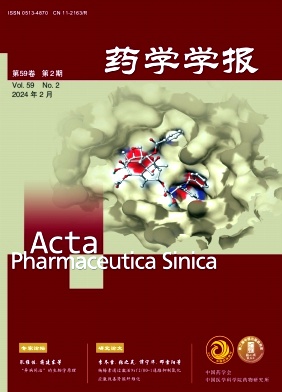
药学学报
北核,CSCD,科核,武A+
CN中文-月刊影响因子2.553
-
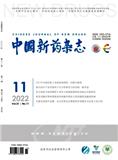
中国新药杂志
北核,CSCD,科核,武A
CN中文-半月刊影响因子1.443
-
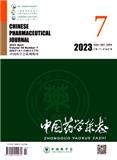
中国药学杂志
北核,CSCD,科核,武A-
CN中文-半月刊影响因子1.392
-
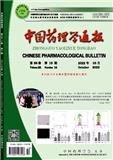
中国药理学通报
北核,CSCD,科核,武A+
CN中文-月刊影响因子2.322
-
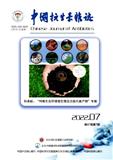
中国抗生素杂志
北核,CSCD,科核,武A-
CN中文-月刊影响因子1.596
-
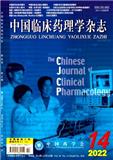
中国临床药理学杂志
北核,CSCD,科核,武A+
CN中文-半月刊影响因子1.499
-
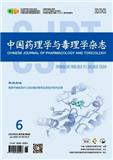
中国药理学与毒理学杂志(不收版面费审稿费)
北核,科核,武A
CN中文-月刊影响因子1.087
-

中国药房
北核,科核,武A
CN中文-半月刊影响因子2.197
常见问题
-
药学学报杂志社官网、联系方式是什么?
药学学报杂志社官网:http://www.elsevier.com/locate/apsb
投稿网址:https://www.editorialmanager.com/apsb/联系电话:010-63026192;63035116(202206期)
投稿邮箱:apsb@yxxb.com.cnyxxb@imm.ac.cn(202206期) -
药学学报杂志是核心期刊么?
药学学报是核心期刊,级别是:CSCD,科核, 是:药学分类下的知网,万方目次,维普目次收录的期刊。
-
请问你们是药学学报杂志社吗?
我们不是《药学学报》杂志社。本站主要从事期刊信息展示与期刊推荐,不是任何杂志官网,直投稿件请联系杂志社。本站仅提供免费的学术指导、论文辅导、期刊投稿信息整理收集服务。
-
你们指导服务后可以保证文章被发表吗?
期刊发表的成功与否,主要取决于文章内容的质量。编辑老师会根据研究领域、创新性等多因素进行考量。我们会帮助您理解期刊的发表要求,助力提升发表几率,从而增加发表的机会。
-
晋级论文能否在报纸上发表?
在学术界,论文的发表往往被视为研究者职业发展的重要一环。晋级论文,即为了获得更高职称或学术地位而撰写的学术论文,通常需在专业期刊上发表。然而,许多人可能会问
